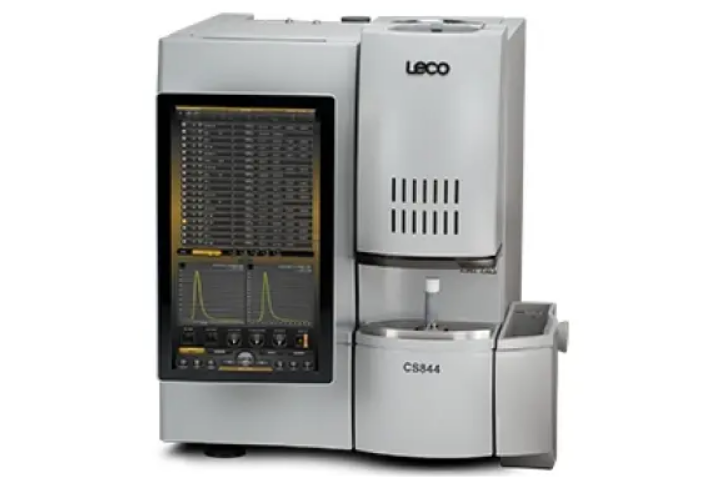844 Series Combustion Analyzer
Benchtop Carbon and Sulfur Analyzer for Metals and Inorganic Samples
With our CS844 for the measurement of carbon and sulphur in primary steels, ores, finished metals, ceramics, and other inorganic materials using the combustion technique, you may easily evaluate a wide variety of carbon and sulphur content. Your laboratory will benefit from improved usability and cheaper cost-per-analysis thanks to cutting-edge hardware and our exclusive Cornerstone® touch-screen software platform.

Features
- Automated 10- and 60-position shuttle loaders or integrated robotic process loaders can boost laboratory productivity.
- Maintenance is kept to a minimum thanks to a high-efficiency autocleaner/vacuum system.
- Service and swap system for combustion tubes on an automatic basis
Enhanced IR cell design allows dual-range detection and improved lifetime and stability. - Ergonomic, operator-centered design with a boom-mounted touch-screen interface
- The need for additional accelerant and cleaning is reduced with a high-efficiency furnace with a low-maintenance design.
Applications
The 844 series is ideal for the following applications: primary steels, ores, finished metals, ceramics, alloys, and other inorganic materials.
Theory of Operation
The CS844 Carbon Sulfur Analyzer is designed to detect carbon and sulphur content in metals, ores, ceramics, and other inorganic materials over a wide range of temperatures. The instrument is equipped with bespoke software that is optimised for touch operation.
RF induction is used to heat a pre-weighed sample of around 1 gramme that is combusted in a stream of filtered oxygen. Carbon and sulphur in the sample are oxidised to CO2 and SO2, respectively, and swept by the oxygen carrier via a heated dust filter, a drying reagent, and two non-dispersive infrared (NDIR) cells, where sulphur is identified as SO2. The gas flow continues past a heated catalyst, where carbon monoxide (CO) is transformed to CO2 and sulphur trioxide (SO2) is turned to SO3, which is then filtered out. A second set of NDIR cells then detects carbon as CO2. To avoid interference from natural variations in atmospheric pressure, a pressure controller is utilised to maintain constant pressure in the NDIR cells. The final component in the flow stream is an electronic flow sensor, which is used to monitor the carrier flow for diagnostic purposes.
CO2 and SO2 absorb infrared (IR) light at distinct wavelengths within the IR spectrum, which is how non-dispersive infrared cells work. As gases move through IR absorption cells, incident IR energy at these wavelengths is absorbed. Short and long route-length IR cells are given for measurement of high and low range signals, as absorption is dependent on path length. For the best measurement, the software chooses which cell to utilise automatically. Unknown sample concentrations are determined in relation to calibration standards. Prior to each study, reference measurements of pure carrier gas are taken to reduce interferences from instrument drift.
